This story was first published by the magazine ARIANA
Just one month after suffering a major stroke, 80-year-old Aki Nakamura is beginning to recover basic movements in the comfort of her Kyoto home. She wears a custom-built smart exoskeleton – a device that looks like sturdy body armour – steered by Amazon’s Alexa. It supports her spine and subtly assists her movements while her muscles regain their strength and response rates. As she grows stronger, Nakamura’s exoskeleton gradually allows her to carry more of her own weight. It also offsets her tendency to put more weight on her right hip, helping her develop a better alignment to avoid hip and back problems in years to come.
Wang Li moved from rural Yunnan, in southwest China, to Shenzhen 15 years ago. Over the last decade, he has gained 40 kilograms﹣more than half his ideal body weight﹣a change he attributes to his sedentary lifestyle and a taste for fast food and sweets. Though he’s just 48 years old, predictive modelling shows his life expectancy to be less than 15 years. In accordance with his employer’s pro-health policies, Wang is currently on a mandatory behaviour optimisation plan, meaning he’s required to carry wearable sensors that continually record his heartbeat rate, dietary intake, exercise and sleep. The related app also offers regular tailored lifestyle recommendations, and shares a monthly progress report with his manager.
Cherry Lau lives in rural Sumatra, Indonesia. Her two children suffer from vitamin A deficiency, which stunts their growth. To help her kids, Lau subscribes to a personalised nutrition programme that uses internal sensors to track nutrients in their blood. The tiny biodegradable sensors are consumed daily as pills and excreted after transferring their readings to an app. Every two weeks, Lau receives a pack of customised powder-based supplements based on the readings, which she mixes into nutritional drinks for her kids. Pregnant with her third child, Lau is also able to perform gynecological and embryonic health scans at home using a mobile app and a wearable device. Luckily for Lau, the textile manufacturer where she works covers her health insurance plan, so she can afford these technologies.
Nakamura, Li and Lau are future fictions. But these health technologies are already taking shape today. As a number of extreme conditions serious affect public health, innovative practices are emerging across Asia’s health tech sector in response.
Edging on extremes
Personal health is always affected by larger forces at play, from demographics and socioeconomics to environmental factors and nutritional trends. In Asia, several forces currently present challenges ahead. There are demographic extremes: In China, Japan and Korea, severely aging populations are faced with lagging geriatric care due to shortage of young nurses. In Vietnam and India, hospitals are flooded with patients whose average age is under 30.
Wealth gaps are growing profoundly wider, too, affecting the nature of health concerns. In Singapore, for instance, average wealth per adult has risen significantly over the past 60 years to be among the highest in the world, but this has brought lifestyle-related diseases such as cancer and diabetes; meanwhile, infections and water-borne diseases claim lives in countries with poor sanitation, such as Cambodia and Indonesia.
Rapid economic development poses further environmental health challenges. Nine of the 10 most polluted cities in the world are in northern India, and worsening air quality is leading to an increase in poor respiratory conditions across the region. Asia sees both ends of the scale in malnutrition, from under-nourishment to obesity – two conditions that exist side by side in China. Access to healthcare also has its own discrepancies, with hospitals unable to cater to demand in heavily populated cities, and rural populations only seeing sporadic health services, if at all.
Georgio Mosis spearheads digital transformation in healthcare as Head of Innovative Technologies at AIA, a pan-Asian life insurance group headquartered in Hong Kong. He believes a key component of the solution to these issues – geriatric care, chronic disease management, lifestyle-induced diseases, and access to care – will be digital.
“There’s insufficient time to train enough doctors and nurses to cater for everyone: we face a tremendous shortage. China has doubled its population within one generation,” says Mosis. “[And so] the future healthcare workforce will be digitally enhanced: We will have digital nurses, their brains trained by humans, to help you manage what you need – diabetes, drug administration, rehabilitation….”
Simply put, a robot might soon replace your family doctor, offering a whole range of services, from on-demand consultations and prescriptions to smart exoskeletons that can help with lost mobility and lifting. Currently, Japan is the leading developer of exoskeletons for healthcare, as it searches for ways to keep its aging population in the workforce for longer.
Hajime Sato, CEO of health tech accelerator MEPLA Japan (an abbreviation for ‘medical platform’), also sees no cause for concern with the advancing role of technology in care, but for different reasons: “Currently, doctors and nurses cannot focus on treating patients because of messy and fragmented records and tasks. Tech will remove these inefficiencies, so that [medical staff] can give their hearts to the patient and their attention to medical research and developing equipment.”
While they identify differing implications for the workforce, both Sato and Mosis foresee a transformation in healthcare services – a shift away from place-based care (such as hospitals and clinics) towards omnipresent health interventions, and a breakdown of the barriers between the different components of the medical industry today. This will affect the relationship between specialists and insurers, hospitals and pharmacies, caregivers and patients. Digitally led changes, they argue, will offer a more well-rounded, personalised health system available to all.
Doctors go digital
What would that look like in practice? For one, specialised healthcare would be available at home. Mosis offers an example from China, where hospitals commonly face overcrowding. Often, he says, patients stay too long while they recover from cardiac surgery, putting pressure on resources – or so it has been until recent years.
In 2014, multinational technology company Philips China collaborated with Beijing University Hospital to test its Cardiovascular Family Care and Rehabilitation Program, which enables hospitals to discharge stable patients early.
“Essentially, the patient leaves the hospital with a medical IoT [Internet of Things] box containing a mobile monitoring system, a blood pressure monitor, scales and an app,” explains Mosis. “Not only does the app coach the patient to take their own readings and remind them to take pills, but it also relays the recorded data to a monitoring doctor.” If necessary, the patient can schedule a conference call with their doctor through the app, and the hospital will contact the patient immediately should they miss a reading.
A free 30-day trial is available with partnering hospitals across China. A similar service is under incubation at CyberPort, a technology and digital startup hub on Hong Kong Island. TeamCare by Acesobee, a startup founded in 2013, can supplement or replace the role of a ward nurse with an online care plan that provides instructions for medication, diet and exercise.
Besides Philips, the major players in this space are WeDoctor and Ping An Good Doctor, both Chinese-owned. WeDoctor, the world’s largest health tech service provider, started in 2010 in Hangzhou, China. A few years later, Ping An, meaning ‘peace’ in Chinese, was established in 2014 in Shanghai. During its Hong Kong IPO last year, it raised US$1.2 billion.
Ping An offers a one-stop, online-to-offline service provider. Put simply, the app provides a comprehensive set of healthcare services that transform the traditional in-patient process. Previously, patients would first visit a clinic, testing centre or hospital where a doctor would diagnose an illness and write a corresponding prescription. Then, they would pick up the prescription at a pharmacy.
Today in China, patients can reach a diagnosis, purchase medicine and pursue a tailored health plan through the app – all as part of a commercial health insurance package. Hajime Sato sees Ping An as a leading example of an emerging trend in private micro-health insurance integrated with care: “Though the insurance industry and the healthcare industry have been independent until now, it will be fused as one industry in future, so that one company will provide both insurance and healthcare services – as Ping An does.”
When you need to see a specialist offline, Ping An enables users to book appointments through its partner network. In China alone, this massive system comprises 50,000 doctors and 3,000 hospitals, as well as clinics and pharmacies. A long list of benefits include a 24-hour non-stop service, consultations of no less than 15 minutes, online enquiries with no queues, medicine delivery within two hours (dependent on location), and personal digitised health records. Similarly, competitor WeDoctor connects 27 million monthly active users to more than 2,700 hospitals, 220,000 doctors and 15,000 pharmacies.
In 2018, Ping An formed a joint venture company with Grab, a Singapore-based car-hailing app that offers rides, food delivery and payment services in cities across Asia. In 2019, the joint venture will develop partnerships with governments, hospitals and doctors to provide integrated and artificial intelligence-assisted online medical consultations, medicine delivery and appointment bookings – all paid for through GrabPay. The consolidation of a successful Chinese health service with a pan-Asian convenience app shows the potential to scale up across much of East and Southeast Asia.
New AI solutions
Integrated, intelligent health services will generate unprecedented levels of information about the health of populations and the efficacy of treatments.
For Sato, the data electronic health records generated from such services will be the key to quality, affordable treatment for the masses. “Until now, treatment was a kind of black box: no one could see the results of the treatment,” says Sato. “Now, we can see who is a good doctor and which medicines work. This can support the patient and the quality of the treatment.”
The result, he predicts, will be the replacement of human doctors by artificial intelligence: “The AI doctor can digest great quantities of data rapidly to make a more accurate diagnosis,” he explains. “The process and the patient’s journey will be changed by data, and of course by AI combined with machine learning.”
To that end, Mosis points to the crucial development of new smart sensors that can be worn or ingested. One biodegradable battery-free implant, developed by scientists at Stanford University in 2018, monitors ‘pulse wave velocity’, or the flow of blood through an artery, to assess the vascular properties of patients at risk for cardiovascular disorders. The research team sees a wide range of potential applications, including transplant, reconstructive and cardiac surgery.
Digestible sensors are on the rise, too. In 2017, Japanese company Otsuka gained FDA approval in the United States for the first ‘digital pill,’ a device that tracks whether or not patients have taken their medication. The pill was developed for the drug Abilify and has been used to treat schizophrenia, bipolar disorder and depression. The sensor it contains – made of silicon, copper and magnesium – is no bigger than a grain of sand. When it comes into contact with stomach acid, it sends a signal to a patch. Currently, the patient can choose who accesses this data and revoke access at any time.
Pregnancy monitoring is another high-growth area for health-tracking devices. Chinese company Extant Future has launched a wearable fetus monitor patch that captures data on movement and heart rate, called Modoo. Rather than ultrasound, it uses a ‘passive monitoring’ system that combines a highly sensitive sensor with an intelligent algorithm, and so can be worn continuously. The app generates a mother-fetus health archive, and offers access to one-on-one consulting online. In remote areas, where medical access is limited, these sensors, combined with mobile connectivity, could hail a new era for healthcare.
Indonesia, home to one of the highest rates of maternal mortality in Asia, is a case in point. The island nation of 268 million is the sixth largest market for smartphones in the world and has one of the fastest growing app markets.
Currently, Indonesia’s largest healthcare operator Bundamedik is collaborating with Philips Healthcare and the Ministry of Health to address maternal mortality. They are building a central Mobile Obstetrical Monitoring system to enable obstetricians and gynecologists to remotely monitor pregnant women by collecting data from physical examinations, performed at home or in local clinics, via a smartphone app.
It’s not just Indonesia. Based in Vietnam, Beth Ann Lopez is the Director of Public Affairs at mClinica – a Singapore-based startup providing healthcare data in Southeast Asia. She sees the rapid expansion of health tech through smartphones as a way of addressing inequality across the region. “If you can reach out to very large segments of the population, you can also target specific health needs. And large-scale access means you can prevent data biases and gain a more accurate picture of health problems across populations, to design better interventions.”
Sato believes the potential for digital services at scale is also the key to affordability. “Just as the internet has made information accessible to everyone, so will healthcare be democratized. The so-called ‘digital therapeutics’ – where patients are treated through online technologies rather than medication – will become cheaper in the future.”
Rather than a pill to mute a mental health condition, the solution would be a behaviour change programme, drawing on psychotherapy techniques. Already, the US FDA has set regulation for software used as a medical device – abbreviated as ‘SaMD’.
Data-driven developments
Healthcare projections are a ripe area for innovation. In May 2018, Google published a paper in Nature, an international scientific journal, showing that predictive modelling based on electronic health records can result in more accurate diagnostics and life expectancy estimates.
In Hong Kong, GemVCare combines analysis of your genetic make-up with lifestyle data to estimate the probability of developing diabetes. Its comprehensive testing program DForesee Enlighten includes your genetic test result, but also provide a personalised recommendation and follow-up by healthcare professionals.
Looking ahead, there are potential setbacks to detailed records of your health online, dating right back to when you were a fetus. You may be happy for your doctor to have access to your health history, but should your employer, too?
According to Mosis, they soon will: “People get health insurance through companies, so companies want to reduce costs by improving the health of their employees. It’s the big P of Prevention! We are seeing many more preventative programmes emerging to prevent musculoskeletal disorders, mental health conditions, burnout and so on.”
Indeed, there are many positive implications for a healthy workforce. In Japan, where the concept of karoshi (or, ‘working to death’) is a recognised phenomenon, the cost of insufficient sleep (affecting productivity and decision-making) is estimated to be nearly 3 per cent of GDP. Employers are innovating to turn this around: one Japanese wedding planning company, Crazy.Inc, is awarding points to employees who get at least six hours of sleep a night, five days a week.
But in the long term, how much access individuals should grant to those outside the medical profession is something that’s bound to spark debate. For instance, what if your employer can not only see your health data but also use it to make predictions about your future? Might women face further discrimination at work based on family planning projections?
As health apps improve the access of central services to individuals’ records, might individual access to other services actually be infringed? Currently regulation on how health data is used lags far behind the innovations. Only four countries globally have a digital health policy – and none of them are in Asia. Digital health publication The Medical Futurist highlights the “considerable risk” of authoritarian regimes misusing patients’ online data.
For instance, we might see a rise in paternalism, whereby a national health insurance holding could change patients’ premiums – and even their access to other services – based on continual surveillance of their lifestyle choices. Too many steaks or cigarettes, and your premium could rise while your eligibility for healthcare falls.
A spectrum of possible implications are already emerging. At the relatively benign end, there’s mandatory use of behavioural change apps, such as QuitGenius.com, which help you stop smoking by identifying what drives you to light up. At the other, there’s health-based discrimination, with increasingly selective access not only to healthcare, but to employment, travel destinations, financial credit, and even housing.
As the health landscape changes, our digital records could affect every aspect of our day-to-day lives. We’re accustomed to the idea that our lifestyle choices affect our health: soon we might need to recognise that it works both ways. In the future, personal health might just become more and more of a public affair.
Anna Simpson is Curator of the Futures Centre, Chief Innovation Coach at Flux Compass, and author of The Innovation-Friendly Organization.
Browse these related signals of change:
https://thefuturescentre.org/signals-of-change/222848/oneweb-promises-global-internet-access
https://thefuturescentre.org/signals-of-change/223449/uncertain-futures-cause-us-birth-rate-drop
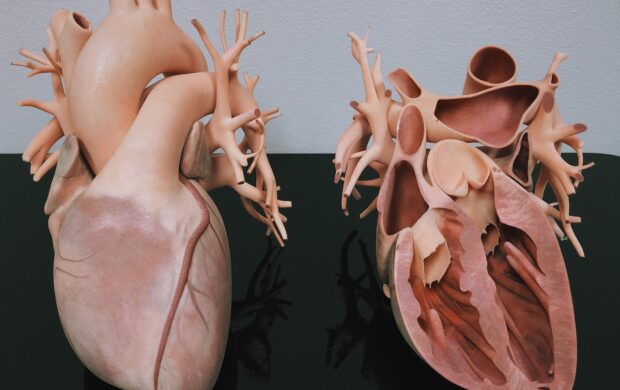

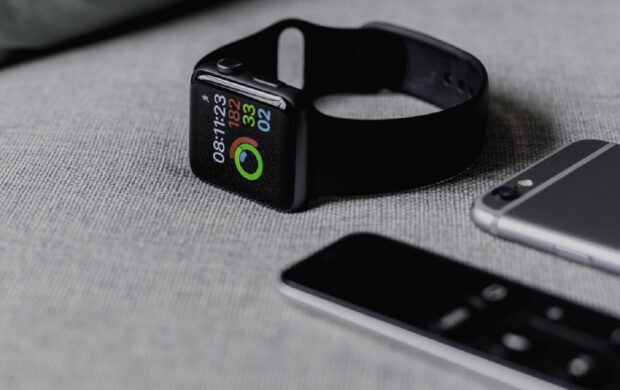

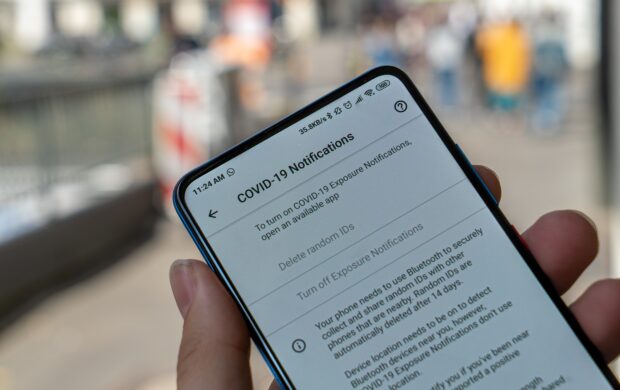

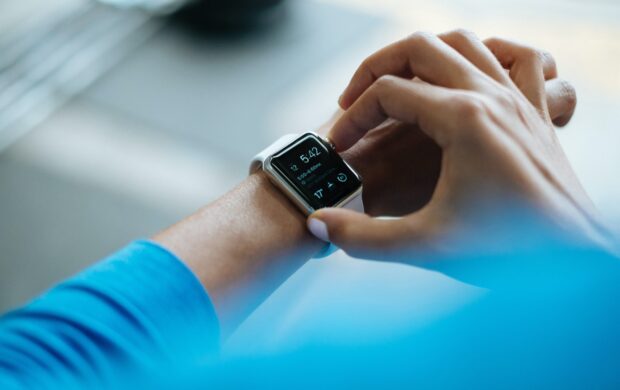


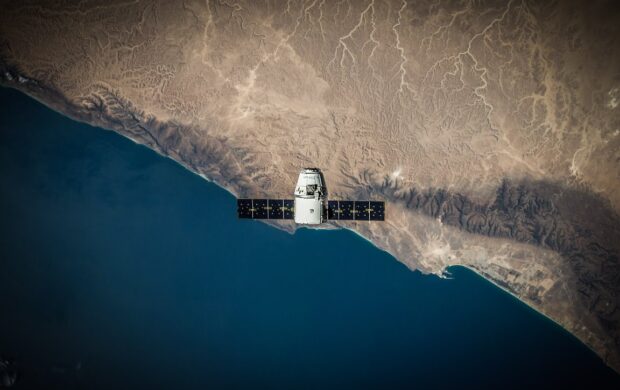


Join discussion